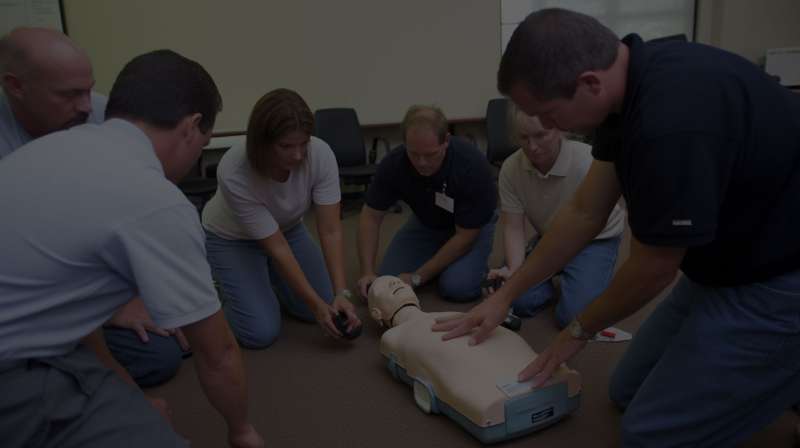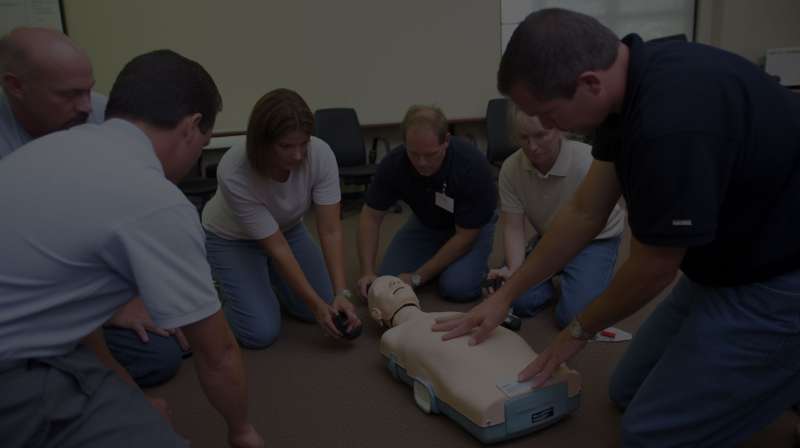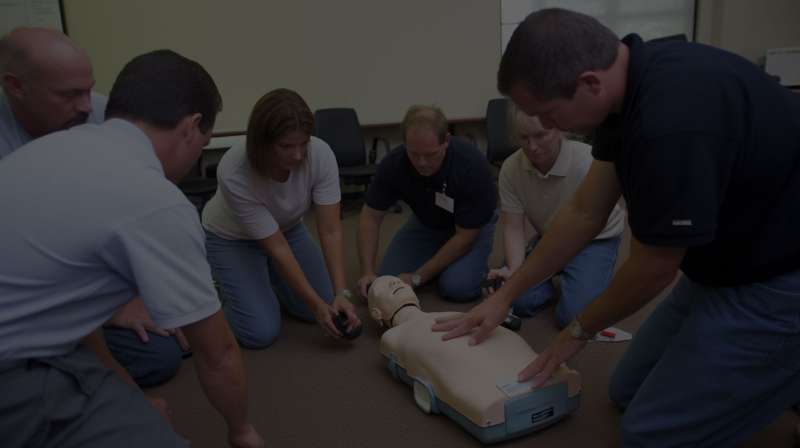An AED (Automated External Defibrillator) is a sophisticated, battery powered microprocessor based device that encorporates a heart rhythm analysis and shock advisory system.
The portable versions are designed to be used by lay rescuers although the use of a defibrillator may be restricted to professional medical technicians in some areas. The Defibrillator connects to the patient by two chest pads, then it automatically analyses whether a shock is required or not.
The electric shock that is sent through the heart by the defibrillator is capable of interrupting the abnormal twitching of a heart during SCA (sudden cardiac arrest) and may restore or restart normal cardiac rhythms. If a layperson or public responder will use an AED machine it usually requires additional tuition by a trained professional and the information above is meant only as a general guideline for Automated External Defibrillators.
Your heart is an incredible pumping machine. The amount of blood pumped around your body in every heartbeat averages more than 100 gallons each hour. February is internationally recognised as Save A Heart Month. Nonetheless, perhaps the reality is that every month should be save a heart month.
In most countries, and certainly in the USA, sudden cardiac arrest is the leading cause of death for men and women. It is reported that 90% of heart attack victims die. However when a bystander acts and intervenes before EMS arrive, someone like you, and performs CPR and cardiac support by defibrillation, around 40% of heart attack victims survive.
AED Laws in Thailand
สพฉ. หนุนให้ความรู้เรื่องการปฐมพยาบาลและการใช้เครื่องกระตุกหัวใจ ไฟฟ้าชนิดอัตโนมัติ (AED) ในภาคประชาชน
In Thailand, the National Institute for Emergency Medicine issued a new Act of legislation in 2014 to allow lay people to use an AED under the supervision of NIEM by dialing 1669. The new defibrillator law also encourages lay persons within the Kingdom to receive professional training.
How does an AED save a life?
Recent research shows that lay rescuer CPR and AED use, have doubled the survival rate of sudden cardiac arrest, compared to early EMS call and early CPR alone. The studies showed that layperson rescuers who are trained in the usage of CPR and Automated External Defibrillators using a planned and practical response including alerting the local EMS system, significantly increase the survival rate of sudden cardiac arrest patients.
Because early defibrillation is so important, many businesses, government agencies, and other institutions have AED units readily available in buildings, recreational facilities and other places for public accessibility.
General features of AED Units
Automated External Defibrillators are not complicated to use and offer relatively easy servicing and maintainance for the owner. Although AED models look slightly different, the principles for using them are the same.
The main physical differences between models include the screen displays, oral prompts, documentation and how the device analyzes the cardiac rhythm. Regardless of its specific features, once an AED determines that the rhythm is shockable and the device charges up, it will prompt you to deliver the electric shock to the patient.




Share on social media